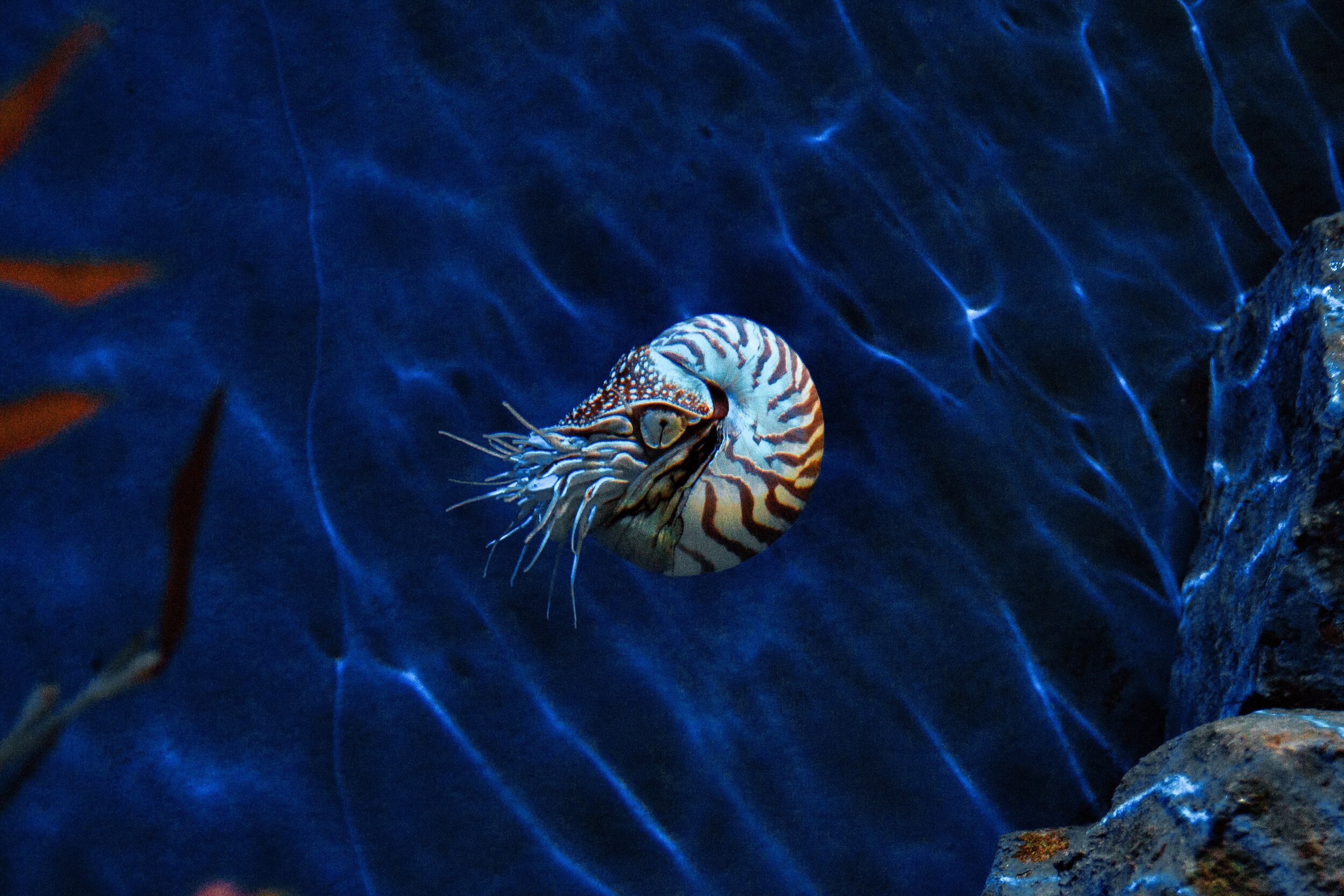Nautilus: The Living Fossil under Threat in our Modern World
Sophie McDonald
Ever pictured an underwater Jurassic Park? Just imagine expansive oceans filled with creatures of all shapes and sizes from reptilian beasts to burrowing worms. Our oceans may have changed dramatically since these primitive beings inhabited ancient waters, but there is in fact a creature that existed millions of years ago and continues to bob alongside modern animals today…
The chambered nautilus is a fascinating marine mollusc that is commonly described as a ‘living fossil’. It earned this title by remaining essentially unchanged since appearing in fossil records 500 million years ago. This means that it has been around longer than trees, four-legged animals (tetrapods) and insects!
The chambered nautilus has a truly distinctive appearance, which has remained essentially unchanged for millions of years. Photo: Shaun Low (Unsplash).
This tropical cephalopod gets its name from its numerous spiralling chambers within its shell; its body lives in the outermost chamber and the remaining chambers are filled with gas, enabling it to stay neutrally buoyant in the water column. Juvenile nautili possess around four chambers and then as they progress into adulthood they amass an impressive 30 chambers in total. These chambers are far from being nautilus’s only unusual body feature. Do you think that octopi and squid have a lot of tentacles? The chambered nautilus has 90 of them. Their tentacles are covered in a sticky substance, which allows this predator to capture its prey. If it can hold prey still for long enough, it will make use of its massive jaw. The jaw is heavily calcified to enable it to bite down on even the most heavily armoured crustacean exoskeletons. Pretty impressive right?
The nautilus’ most distinctive feature is it’s beautiful, uniquely patterned shell. It showcases a mesmerising, mathematically perfect Fibonnacci spiral pattern making them one of the ocean’s great wonders. However this stunning appearance has ultimately led to the chambered nautilus’ decline. While many of us would prefer to see this shell housing a live animal thriving in its habitat, there are many others who purchase nautilus shells for decoration. Nautilus shells can be found throughout markets in their native Indo-Pacific region, as well as in retailers all across the globe. Immense consumer demand for nautilus shells is driving the animals ever closer towards extinction as populations continue to be overfished, causing drastic declines (in some cases by 80%). Organisations such as The Center for Biological Diversity have worked hard to curb international shell-trade and in 2016 obtained a CITES Appendix II listing for the chambered nautilus as well as all of the other less common nautilus species. This listing means that commercial trade is able to continue but must be sustainable and fully monitored.
Always think before you buy shells as souvenirs when travelling abroad. Photo: NICE GUYS (Pexels).
But is this enough? The chambered nautilus has an unfortunate mix of life-history traits including slow growth rates, low fecundity, and long generation and gestation times. This means that despite a degree of legal protection, this species is still vulnerable to even low levels of fishing intensity. While overfishing is the nautilus’ greatest immediate threat, they are also threatened by other growing problems such as habitat degradation and ocean acidification.
It is unclear whether nautili are sufficiently protected in order to prevent these unique animals from going extinct. One thing that we can all do to help as individuals is ensure that we do not fuel the demand for nautilus shells. Whether on your travels in Indo-Pacific corners of the world, or if you spot a nautilus shell for sale elsewhere in the world, never purchase these spiralled souvenirs. If you can, try to encourage the same actions in others and if it is safe to do so, engage in a similar dialogue with the vendors.
The chambered nautilus existed before dinosaurs and has managed to survive every major global extinction event, only to be decimated by humans in the Anthropocene. This bizarre and beautiful species deserves more than a future on someone’s mantlepiece, nautili should continue to inhabit our oceans for eons to come.


